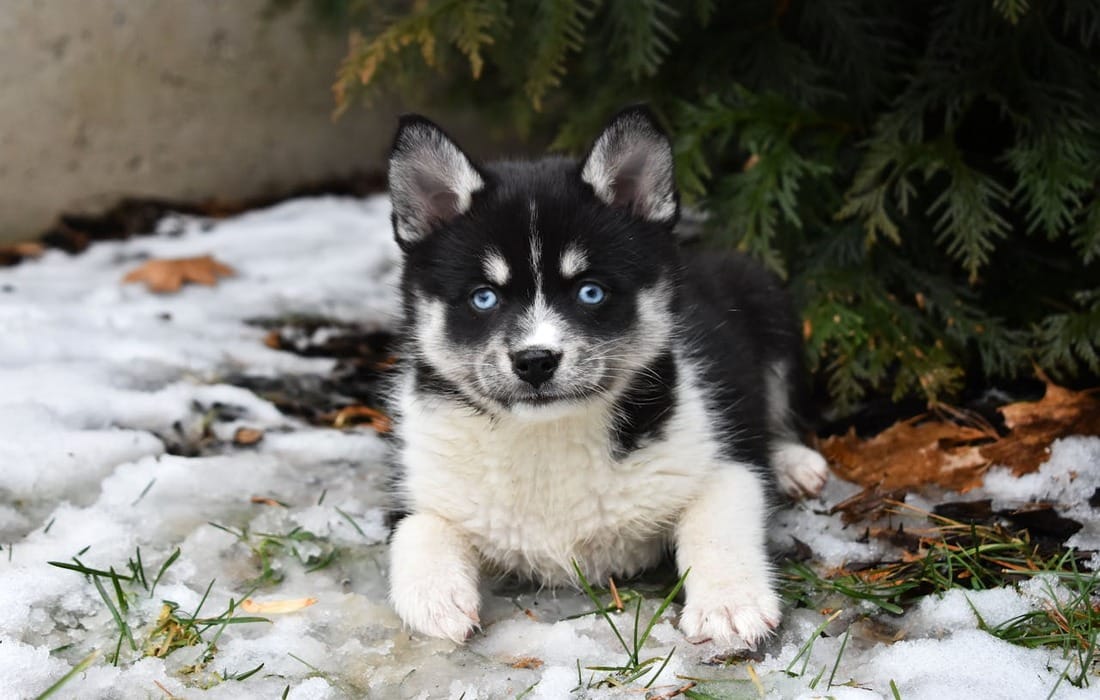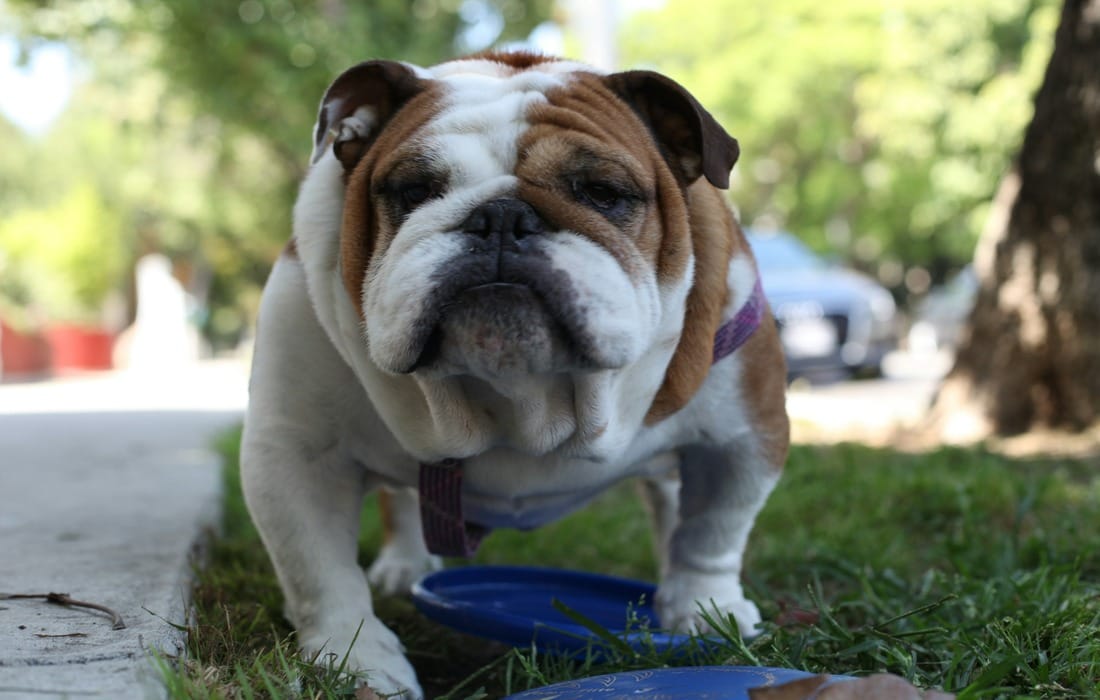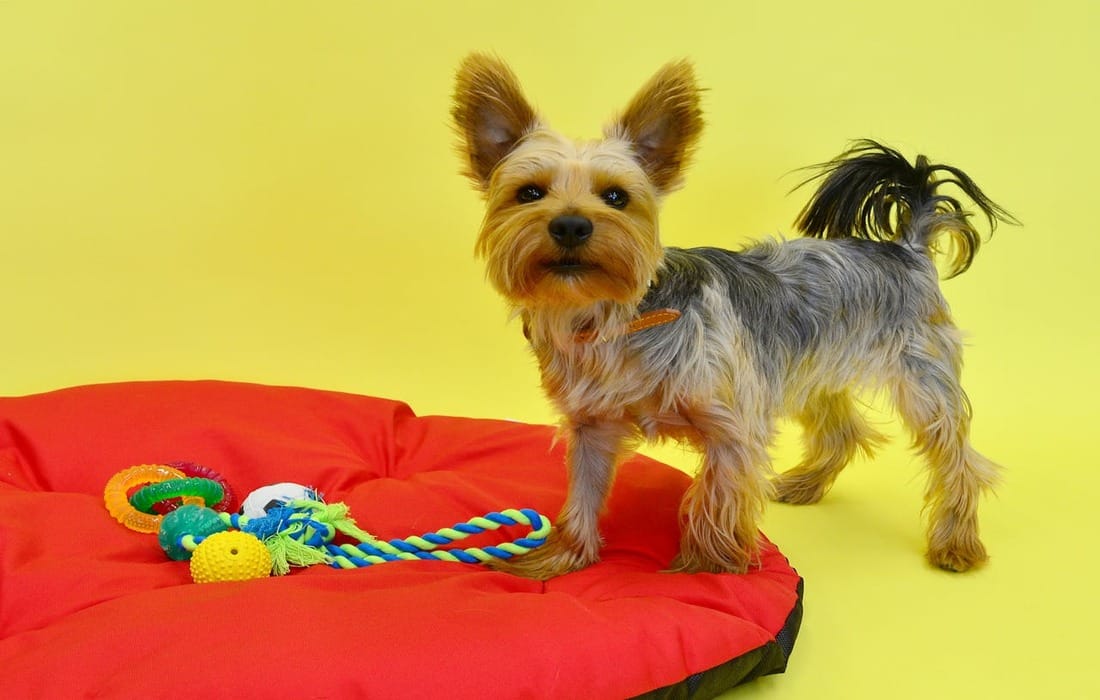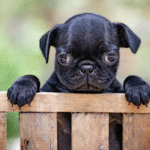Being a dog owner doesn’t mean that you have to sacrifice style in your home. Making your house dog-friendly isn’t just about keeping things safe; it’s about creating a space where both you and your pup can thrive. From clever storage for toys to floors that can handle muddy paws, a few thoughtful tweaks can make a world of difference. Whether you’re welcoming a puppy or accommodating a senior dog, this guide is here to help you tailor your home to meet their needs and yours. Think of it as your go-to resource for turning your living space into a true haven for you and your furry family member. Let’s get started!
Creating a Safe Environment for Your Dog
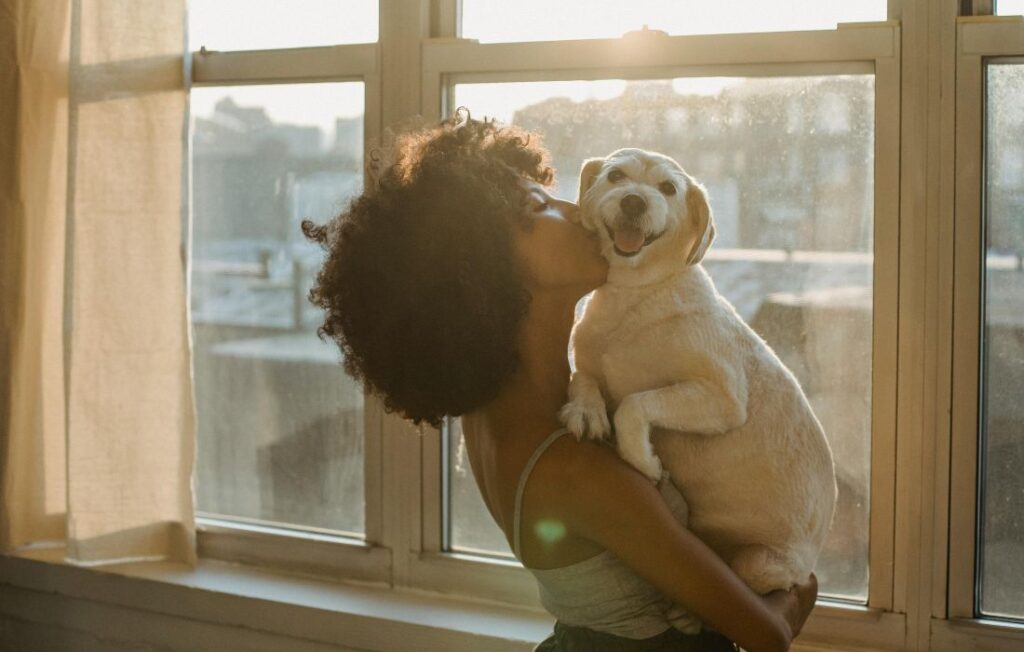

Making your home dog-friendly is more than just fun décor, it’s about creating a safe and secure space where your furry friend can roam without worrying about harm. Dogs are naturally curious, often finding their way into trouble if hazards aren’t addressed. By focusing on safety, you’ll reduce stress for both you and your pup. Let’s break down the essentials.
Identifying Common Hazards
Dogs have a knack for getting into things they shouldn’t, so spotting potential dangers ahead of time is essential. Many everyday items can pose serious risks to your dog.
- Electrical Wires: Whether it’s phone chargers or unplugged appliances, dogs can chew on exposed wires, causing burns or electric shock. Use electrical cord protectors or hide cords behind furniture.
- Choking Hazards: Small items like buttons, coins, or pieces of toys can easily become lodged in a dog’s throat. Keep tiny objects out of reach, particularly if you have a curious puppy.
- Sharp Objects: Scissors, knives, or even sharp-edged furniture can injure a dog. Store tools and utensils securely, and inspect your home for any edges that could cut.
- Toxic Foods and Plants: Foods like chocolate or raisins, and plants like lilies or philodendrons, can be dangerous if consumed.
Managing Escape Risks
While dogs love their freedom, wandering very often leads to danger. To avoid escapes, a few preventative steps will go a long way.
- Secure Windows and Doors: Dogs can slip through open windows or doors when they’re excited or curious about something outside. Investing in pet-proof latches or window guards can help.
- Check Your Fences: Repair any gaps or weak spots in your yard’s fencing. For smaller breeds, adding chicken wire or hardware cloth to the lower half of fences provides added security.
- Dog Doors: If you use a doggy door, ensure it’s lockable and only accessible when you’re home. Need tools to secure your pet door?
Understanding Poisonous Substances
Dogs are like toddlers—they’ll sniff, lick, or chew on nearly anything. This fascination with exploring means you need to be vigilant about substances that could harm them.
- Medications: Pills, even in small amounts, can be lethal. Store all medications in high cabinets or dog-proof containers.
- Cleaning Products: Many household cleaners contain bleach, ammonia, or other harmful chemicals. Switch to pet-safe cleaning solutions where possible, or keep these products stored away from your dog’s access.
- Household Items: Batteries, insecticides, and antifreeze can cause serious poisoning. Antifreeze, in particular, has a sweet taste that dogs may find irresistible. Check out this informative resource on toxic household items for a comprehensive guide.
The golden rule here? If something could harm a child, chances are it’s unsafe for your dog too. By taking these steps, you transform your home into a safe environment that supports your dog’s health and happiness. The effort will be worth it when you see your furry friend happily—and safely—exploring their surroundings.
Designing Dog-Friendly Areas in Your Home
Turning your home into a dog-friendly sanctuary doesn’t mean sacrificing style or function. It’s about thoughtfully designing areas where your dog feels comfortable, secure, and nurtured. From cozy sleeping spots to practical cleaning stations, these spaces make life with your pup smoother and more enjoyable. Let’s explore how you can adapt your home to cater to their needs.
Setting up a Comfortable Bed Space
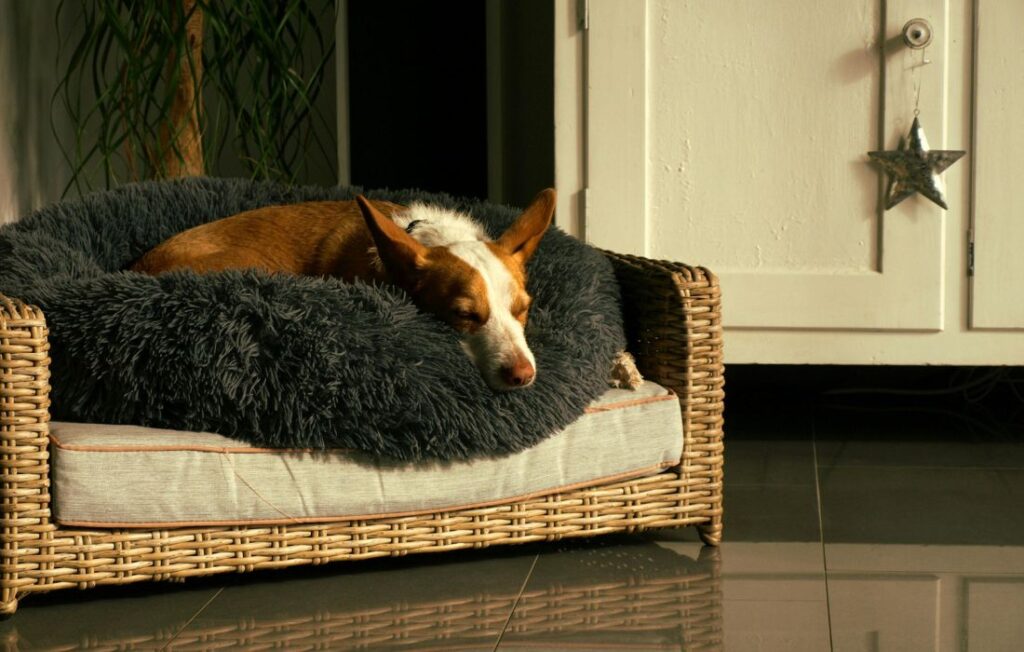

Every dog needs a designated place to rest and recharge. A properly chosen dog bed isn’t just furniture; it’s where they’ll feel safe and secure. When selecting a bed, consider your dog’s size, age, and sleeping habits. Do they sprawl out or curl up into a tiny ball? For larger breeds or dogs that love stretching out, memory foam beds can offer excellent support. Smaller dogs or those seeking extra security might prefer beds with raised sides.
Placement is equally important. Keep the bed in a quiet corner of the house, away from high-traffic areas. Bedrooms or living rooms often make ideal spots because they allow the dog to be close to their human family without constant disturbances. If you need help figuring out what kind of bed fits your dog, this comprehensive guide breaks it all down.
Establishing a Feeding Station
Mealtime for your pup should be neat, organized, and simple. To keep spills and messes at bay, opt for spill-proof bowls or elevated feeders. These not only minimize water and food splashes but are also ergonomically better for your dog’s posture, especially for larger breeds.
Consider placing the feeding station in a low-traffic, easy-to-clean area like the kitchen or mudroom. Use a pet food mat under the bowls to contain crumbs or water drips. Also, keep a dedicated container nearby for storing kibble or treats to optimize convenience. If you’re on the hunt for functional and tidy feeding setups, check out the best spill-proof water bowls available online.
Adding a Mudroom or Pet Cleaning Station
Let’s face it—dogs and mud go hand-in-paw. A designated cleaning area can stop dirt and debris from invading your home. Whether it’s a separate mudroom or a small nook by your entryway, a pet washing station simplifies the process of cleaning muddy paws or giving your dog quick baths.
Incorporating features like a handheld sprayer, built-in basin, or durable floor drain transforms a simple setup into a game-changer. It’s not only practical but also improves your home’s cleanliness and cuts down the stress of impromptu clean-ups. Need inspiration for this setup? Creating these tailored spaces in your home ensures your dog’s comfort while keeping messes under control. Setting up designated zones like these will make your life, and your pup’s life easier.
Choosing Dog-Friendly Furniture and Materials
When you share your home with a dog, your furniture and flooring choices have to work for both aesthetics and practicality. The constant hustle of paws, playful clawing, and inevitable shedding can test even the highest-quality materials. By choosing furniture and flooring specifically designed to handle the demands of a dog-friendly household, you can maintain a beautiful home without compromising on durability or convenience.
Pet-Proof Flooring Options


Your floors take a serious beating if you’ve got an active dog running around. Scratches, muddy paws, and accidents mean your flooring options need to be resilient, easy to clean, and water-resistant. Here are some top choices:
- Tile: Tile floors are practically indestructible when it comes to dog households. They’re resistant to scratches and water damage, making cleanup easy after an adventure at the park. They can feel cold on sensitive paws, so consider adding washable area rugs for comfort.
- Laminate: If you want the look of hardwood minus the high maintenance, laminate is an affordable and durable option. Just make sure to choose one with a textured finish to prevent slipping for playful pups.
- Luxury Vinyl Planks (LVP): A great middle ground, LVP mimics natural wood while being completely scratch-resistant and waterproof. It’s perfect for handling life with high-energy dogs. Explore the best vinyl plank options for dogs.
Avoid using plush carpet, unless you’re ready for constant upkeep. Carpets absorb stains and odors, making them less practical for dog-loving homes.
Ideal Fabrics for Furniture
Furniture surfaces take as much punishment as your floors, especially if your pup loves to nap on your sofa or armchairs. Choosing the right fabric can save you time and frustration.
- Microfiber: This tightly woven synthetic material is a dream for dog owners. It doesn’t attract fur, resists claw marks, and can be spot-cleaned with ease.
- Leather: Surprisingly durable, leather is an excellent option for resisting scratches and messes when regularly conditioned. Go for darker colors or distressed finishes to hide imperfections over time.
- Canvas and Outdoor Fabrics: These heavy-duty fabrics can hold up to the wear and tear of pets while being easy to wash. Plus, modern outdoor furniture fabrics often look just as stylish indoors.
Avoid materials like velvet or silk for everyday furniture, as they can be magnets for fur and are challenging to clean.
Using Colors to Mask Fur
If shedding has turned your vacuum into your best friend, consider how your furniture’s color palette can work in your favor. Matching furniture colors to your dog’s fur is a simple visual trick to hide shedding between clean-up days.
- For light-colored dogs, neutral shades like beige, cream, or soft grays blend effortlessly with their fur.
- If you have a darker-coated dog, deeper shades such as charcoal gray, brown, or even black will naturally mask their hair.
- Got a multicolored pooch? Patterns like subtle stripes or textured fabrics can help make shedding less visible.
Remember, it’s not just about hiding hair—it’s about giving your home a pulled-together look that stays guest-ready. For more inspiration on pet-friendly color palettes, check out this guide to choosing pet-friendly furniture colors.
Making thoughtful decisions about flooring and furniture materials is one of the smartest steps you can take as a dog parent. It keeps your home looking great while making life easier for both you and your furry friend.
Maintaining Cleanliness in a Dog Household
Living in a home with dogs doesn’t have to mean constant mess or chaos. With some thoughtful strategies and the right tools, you can easily maintain a clean and inviting space for both you and your furry friend. From staying on top of shedding to tackling unexpected accidents, let’s explore how to keep your house fresh and tidy in a dog-friendly way.
Regular Grooming to Minimize Shedding
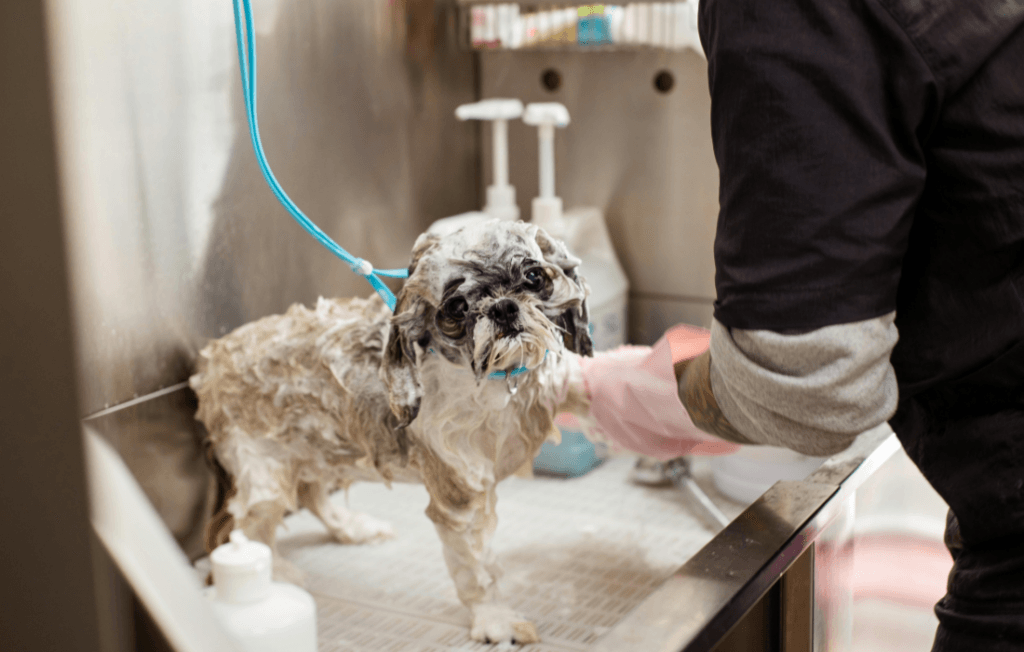

When it comes to maintaining cleanliness, regular grooming is your first line of defense for reducing fur and allergens indoors. Not only does brushing help remove loose fur before it lands on your furniture, but it also reduces dander—one of the main triggers for allergies. Bathing your pup on a consistent schedule can also help cut down on odors and keep allergens under control in your home.
For best results, use grooming tools designed for your dog’s coat type. A good-quality de-shedding brush can work wonders for breeds like Golden Retrievers or Huskies, while dogs with shorter hair benefit from rubber curry brushes.
Investing in Pet Hair Removal Tools
Battling pet hair is no joke, so investing in the right tools makes a world of difference. A vacuum designed specifically for pet households is a must-have. These vacuums offer features like advanced suction, specialized pet hair attachments, and filters that capture microscopic allergens. The New York Times Wirecutter recommends models like the Shark or Dyson vacuums for their unbeatable performance on fur removal.
For quick clean-ups, nothing beats a lint roller or a handheld vacuum. Compact and easy to manage, these tools help tackle fur on surfaces like couches, car seats, or even your favorite sweater. Pair a powerful vacuum with washable furniture covers for added protection and easier maintenance. Trust me, your weekends will feel less like a constant “cleaning spree.”
Choosing the Right Cleaning Products
Accidents happen, and it’s just part of living with a dog. Enzyme-based cleaners are absolute lifesavers when it comes to tackling stains and odors from pet accidents. These natural cleaners work by breaking down organic compounds found in urine, vomit, or feces, completely eliminating the odor rather than masking it. For instance, products like Biokleen Bac-Out are eco-friendly, non-toxic, and perfectly safe for your pets.
When choosing cleaning products, avoid anything containing ammonia—it can mimic the smell of urine and encourage your pup to re-mark the spot. Keep a bottle of enzyme-based cleaner handy for those “just in case” moments, and consider using washable pee pads or pet potty mats in areas prone to accidents.
Tailoring the Home for Different Dog Needs
Every dog is unique, and their living environment should reflect their individual needs. Whether you’re raising a curious puppy, caring for an aging senior dog, or managing the boundless energy of an active breed, tailoring your home creates a space that supports their well-being. Here’s how to adapt your home for every stage of your dog’s life.
Preparing for Puppies
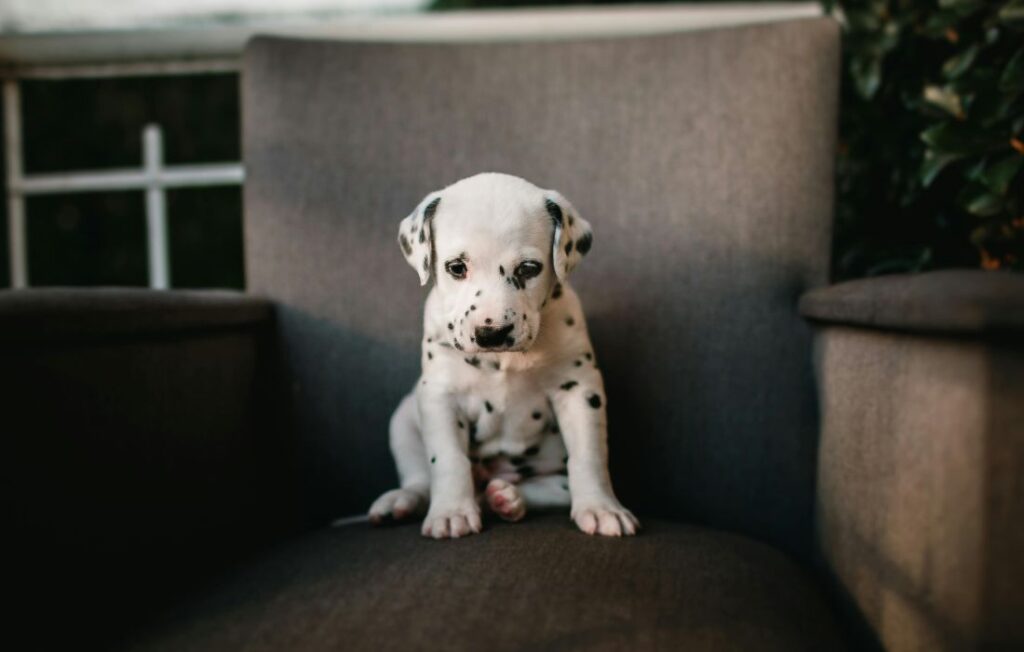

Welcoming a puppy into your home is an exciting time, but it also comes with new challenges. Puppies are naturally curious, and their instinct to chew everything in sight puts them at risk of harm. Puppy-proofing ensures their safety and protects your belongings from sharp little teeth.
- Remove Chewable Hazards: Pick up items like shoes, remote controls, and small household objects that puppies often mistake for chew toys. Pay special attention to power cords and outlets; you can safeguard these with cord covers or blockers.
- Temporary Furniture Covers: Puppies are notorious for accidents, so consider placing washable covers on furniture, especially during potty training. This makes cleanups a breeze and keeps your furniture in tip-top shape.
- Secure Trash Cans and Storage: Puppies will often rummage through trash looking for adventure. Use covered bins or place them in inaccessible areas.
Adapting for Senior Dogs
Older dogs face mobility challenges, joint pain, and occasional vision or hearing impairment. Thankfully, a few small adaptations can make their lives significantly more comfortable and keep them independent at home.
- Orthopedic Beds: A supportive bed is crucial for easing the aches and pains of aging joints. Look for memory foam options designed for senior dogs.
- Raised Food and Water Bowls: Lifting bowls to an ergonomic height reduces strain on your dog’s neck and back.
- Ramps and Stairs: If your dog struggles to climb onto furniture or navigate stairs, providing ramps or pet stairs can be life-changing.
- Non-Slip Mats: Slick floors can be problematic for senior dogs. Adding non-slip mats to their walking areas prevents injuries and builds their confidence to move around.
Special Considerations for Active Dogs
If you have a high-energy or athletic breed, channeling their energy productively is key to keeping them healthy and preventing destructive behaviors. Creating spaces suited for play and activity can provide an outlet for that boundless energy.
- Indoor Play Zones: Designate an area indoors where your dog can play when the weather isn’t cooperative. Add rubber floor mats to prevent skidding during active play. Looking for inspiration? Check out this article on indoor playroom ideas.
- Outdoor Accessibility: If possible, ensure your backyard is fenced and secure. Adding agility equipment, like tunnels or jump bars, creates a fun exercise area right in your backyard.
- Toys and Enrichment: Durable toys that encourage problem-solving or physical activity work wonders for active dogs. Rotate toys frequently to keep your pup engaged.
Active dogs thrive when their environment supports their natural enthusiasm for life. A well-planned play area isn’t just fun—it’s essential for their happiness and overall health. Customizing your home for your dog’s specific stage and energy level, isn’t just about comfort—, it’s about fostering a happy, healthy life tailored perfectly for them.
Wrapping Up
Creating a dog-friendly home isn’t a one-size-fits-all approach, it’s about blending safety, comfort, and cleanliness in ways that work for both you and your furry companion. Protect your pup by removing hazards, establish cozy spaces that meet their needs, and choose materials that survive the wear and tear of daily life with dogs. Small changes, like using lint rollers, secure storage for food and cleaning supplies, or non-slip rugs, can go a long way.
Start with one or two updates and build from there. The little things, like a cozy bed in a quiet corner or a doggy mat by the door—can transform your home into a place where your dog feels cherished. Most importantly, remember that creating a dog-friendly space is less about perfection and more about love and intention. It’s about making your house feel like home—for both of you. How will you start tailoring your home for your best friend today?


